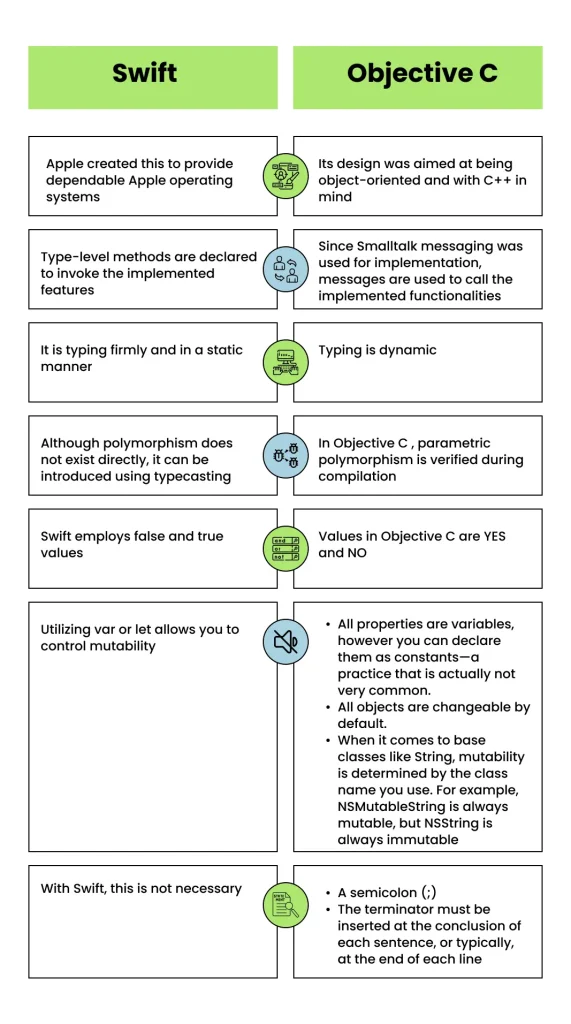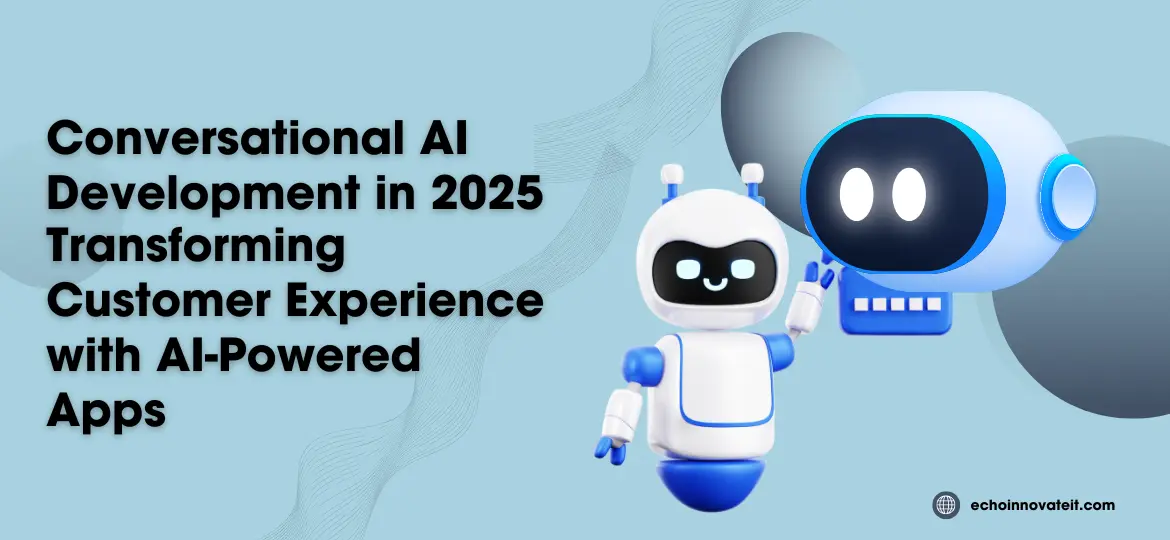As the demand for iOS app development continues to soar in the USA, one of the biggest questions businesses and developers still ask in 2025 is — “Should I choose Swift or Objective-C for iOS app development?”
Both languages have shaped the world of Apple app development, but with evolving technology, Swift has taken the lead in performance, speed, and scalability. However, Objective-C still plays a vital role in maintaining legacy apps and enterprise systems.
If you’re a startup, B2B company, or enterprise looking to build a robust iOS app, understanding the differences between Swift and Objective-C will help you choose the right technology for your project.
Overview: Swift and Objective-C in 2025
- Swift, launched by Apple in 2014, has now matured into a powerful, developer-friendly, and performance-optimized programming language. It’s the go-to choice for modern iOS apps, macOS, watchOS, and tvOS development.
- Objective-C, Apple’s older language, is known for its stability, proven reliability, and compatibility with existing systems — especially for maintaining older apps built before Swift’s launch.
- In 2025, Swift dominates new app development projects due to its speed, security, and AI-readiness, while Objective-C remains useful for legacy app maintenance.
Swift vs Objective-C: A 2025 Comparison
| Feature | Swift | Objective-C |
|---|---|---|
| Launch Year | 2014 | 1984 |
| Ease of Use | Beginner-friendly and clean syntax | Complex syntax |
| Performance | Faster and optimized for iOS 18 and iPhone 15 | Slower than Swift |
| Safety | Strong memory management and error handling | More prone to runtime errors |
| Interoperability | Works seamlessly with Objective-C | Limited Swift integration |
| Speed of Development | Faster | Slower |
| Community Support (USA) | Huge and growing | Limited and shrinking |
| Best For | New iOS apps, startups, AI-based mobile apps | Legacy systems, maintenance projects |
1. Why Swift Dominates iOS App Development in 2025
Swift is the future of iOS app development — especially in the USA, where most mobile-first startups, fintech platforms, and healthcare apps are now built using Swift.
Key advantages include:
Speed: Swift’s performance is up to 2.6x faster than Objective-C.
Safety: It eliminates entire classes of unsafe code.
Ease of Maintenance: Its clean, readable syntax helps developers build and update apps quickly.
Integration with AI & ML: Swift works seamlessly with Apple’s Core ML, ARKit, and Vision framework, making it ideal for AI-driven iOS apps.
Cross-platform capability: Works well with SwiftUI and Flutter-based hybrid apps.
2. When to Use Objective-C in 2025
Despite being older, Objective-C still has its place. Many established brands in the USA continue to rely on it to maintain their older apps.
Use Objective-C when:
You’re updating or maintaining an existing app built before Swift’s release.
You have a large Objective-C codebase and limited resources to migrate.
Your app requires specific legacy frameworks not yet available in Swift.
3. Performance and Speed: Swift Wins in 2025
Performance is a major factor in mobile app development. Swift’s LLVM compiler translates code into optimized machine code for Apple hardware.
Swift apps run 30–40% faster than Objective-C equivalents.
Swift’s automatic memory management reduces crashes and improves stability.
It supports asynchronous APIs, ideal for apps requiring real-time updates — like stock trading apps, fitness trackers, and chat platforms.
In contrast, Objective-C apps may face slower compile times and higher maintenance demands.
4. Developer Productivity and Cost Efficiency
For businesses and startups, Swift offers a faster development cycle and lower overall cost.
Swift syntax is concise and expressive, reducing lines of code.
It’s easier to learn, making it accessible for new developers.
Faster updates and fewer bugs translate to reduced maintenance costs.
5. Mobile App Security and Maintenance
In 2025, security is non-negotiable for iOS apps — especially for fintech, healthcare, and eCommerce platforms.
Swift’s built-in safety features, strong typing, and memory protection make it inherently more secure than Objective-C.
It also integrates easily with Apple’s privacy APIs and Face ID / Touch ID authentication, helping USA-based app developers meet App Store security standards.
6. Which Language Is Better for Mobile App Development?
If you’re developing a new mobile app for iOS in 2025 — choose Swift.
If your business already runs on an older iOS app built with Objective-C — continue maintaining it until you’re ready to migrate.
✅ Use Swift for:
Fintech apps
eCommerce apps
Fitness and health tracking apps
AI-powered or AR-based apps
Startups launching in the USA
✅ Use Objective-C for:
Legacy enterprise applications
Banking or insurance platforms built pre-2014
Conclusion
In 2025, Swift is the clear winner for new iOS app development — combining speed, safety, scalability, and future-readiness.
Objective-C still plays a role in maintaining existing systems, but Swift’s modern syntax, faster performance, and deep integration with AI, AR, and 5G-powered apps make it the preferred choice for businesses across the USA.
Whether you’re building a startup mobile app or a custom enterprise solution, adopting Swift will position your iOS app for long-term success in a competitive digital landscape.
Are you someone who is planning to start an iOS App Development project?Sometimes, it can be confusing to decide which programming language to choose for your projects: Swift Vs Objective C. Today we are going to focus on two of the most popular languages : Swift vs Objective C in detail.
Swift vs Objective C: Meaning
What Is Swift?
In 2010, Chris Lattner, an Apple employee, developed this new programming language named Swift which was available to general public in 2014.
Swift quickly become popular due to its simple design and smooth functioning. With its current features, automated memory management, and simpler syntax, many developers now prefer it over Objective C for iOS app development.
This general-purpose programming language offers a productive method for developing server, desktop, and mobile software, particularly suitable for coding that prioritizes performance and facilitates rapid bug finding and resolution.
Swift is especially easy for those who are familiar with contemporary programming languages like Python or JavaScript. In recent years, both Swift and Objective C have gained increasing popularity. Swift, with its novel features such as optional and type inference, enables the creation of shorter, cleaner code with fewer errors and crashes compared to Objective C.
All in all, Swift is a promising programming language that works well with Linux and is expanding rapidly.
What Is Objective C?
The Stepstone firm developed the well-known programming language Objective C in the early 1980s. Because it is an object-oriented programming language, developers may easily handle complicated jobs and structures. However, new people may find Objective C difficult due to its sometimes complex syntax.
Although Objective C is an old programming language, it is still useful today. Despite lacking some of the more recent capabilities than Swift, Objective C has a strong and vibrant community.
The manual memory management of Objective C programs is a major obstacle. Although it might be laborious and time-consuming, proper memory management is necessary to maintain the functionality of apps. The Objective C and Swift comparison will clarify how swift addresses this issue and enhances memory management in comparison to Objective C.
Swift Vs Objective C: Features
Swift is newer in comparison to Objective C and thus has more unique features like type inference type safety, polymorphism, and dynamic libraries for better performance of iOS App Development. Some of the basic features of Swift and Objective C are discussed below :
Features Of Swift
- Memory management system that operates automatically: A programmer can save time and effort by not having to worry about how much memory a project will require thanks to Swift’s Automatic Reference Counting (ARC) functionality, which manages memory automatically.
- Learning Swift is simple: Thanks to its many features, even non-programmers may learn Swift easily and quickly. Moreover, Swift offers a sandbox where new users may quickly and freely pick up the basics of the language.
- Concise syntax for codes: Because of its concise code syntax, Swift allows developers to accomplish a lot with fewer lines of code. It minimizes the amount of scripts needed for string manipulation and repeating statements.
- Swift moves quickly: Because of Swift’s efficient compiler, you can write code more quickly and easily without having to worry about accounting.
- Safe language for programming: Error probability is decreased by using the Swift programming language. Swift also gets rid of bug inclinations by causing a runtime crash that forces programmers to address the problem right away.
Features of Objective C
- Data concealing: One safety aspect of the Objective C programming language is data masking, which greatly reduces the risk of unauthorized access to data. Data access is controlled and intentional or unintentional program modifications are thwarted with the help of the data-hiding safety feature.
- Compilation: Programmers find it simpler to prevent other users from having direct access to the state values of each object variable when they utilize Objective C’s encapsulation feature. This Objective C feature also makes it simple to set variables flexibly to be read-only or write-only, hide data, and adjust to changing requirements.
- Inheritance: If you utilize Objective C, you might want to add new classes to your existing ones. You can accomplish it with the aid of the Objective C programming language’s inheritance mechanism. In addition to allowing you to create classes, inheritance allows you to design a modification while maintaining the same features, reuse code, and independently extend the original program using accessible classes and interfaces.
- Quick program: Every software developer wants to be able to code without having to wait around for the programming language or tools to be used. You can have this wish fulfilled thanks to Objective C’s fast program feature, which makes programming more effective and rapid thanks to the language’s design.
- Polymorphism: The Objective C programming language’s polymorphism feature allows users to access several objects via a single interface. There are two varieties of the polymorphism feature: static and dynamic.
Comparison Table Of Swift Vs Objective C
Swift Vs Objective C: Performance

Swift performs at a faster pace than Objective C . Because of its extremely effective structures and tools, Swift is 2.6 times faster than Objective C . While still quite quick, Objective C is significantly slower than Swift.
Swift Vs Objective C: Speed Of Coding
Swift allows for speedier coding than Objective C . Objective C is difficult to write code in due to its complex grammatical structure, which causes developers to create code in Objective C more slowly. Swift is a fairly quick programming language to write and understand because it has fewer imports and stringent code-writing guidelines.
Also Read:
Pros & Cons Of Swift Vs Objective C
Swift Benefits
- Swift is a safer programming language, which is one of Apple’s advantages. Apps created in Swift are less likely to crash and have errors than apps created in Objective C due to its capabilities (such as generics, optionals, and type inference).
- Apple is concentrating on developing Swift, Apple actively supports the developers who use this language and is always improving it with new features. There are technical sessions regarding Swift at every WWDC (Apple’s annual Worldwide Developers Conference), and the programming language has a vibrant developer community. Swift can even be used as a backend language by developers thanks to certain frameworks.
- The Swift UI framework is included for creating interfaces. In 2019, Apple unveiled SwiftUI, a framework that makes it easier and faster for developers to create engaging user interfaces than UIKit (the sole UI framework available for Objective C ). Although it still has a ways to go before it becomes the primary tool for creating UI in iOS, it has a lot going for it and can be used in place of UIKit. SwiftUI is a match made in heaven if you require a simple sample app to test how your idea might look.
- Developers simply like to use Swift, In contrast to almost 76% of iOS developers who detest Objective C , 63% of them adore utilizing Swift, according to the 2022 Stack Overflow Developer Survey. It goes without saying that a motivated developer performs better than one packed with fear!
Disadvantages Of Swift
- It’s only recently launched: Even though Swift is reliable and secure, regular upgrades may bring in features that are incompatible with previous iterations of iOS. That may motivate you to update your apps to a more recent iOS version, but it might also compel you to discontinue support for older devices (often those that are more than six years old).
- The cross-platform functionality is lacking: Although Swift is compatible with Linux, Windows, and all Apple platforms (as of 2020), React Native, Xamarin, and Flutter are the best choices for cross-platform applications. While Kotlin Multiplatform Mobile is still in its infancy, there is promise for using Swift with it.
Advantages Of Objective C
- It is tried and true, having been around for more than thirty years. Yes, millions of lines of code and numerous third-party frameworks with extensive documentation are written in Objective C.
- Furthermore, there is a response available for almost all queries concerning Objective C : Among the more than 321,899 Swift queries on Stack Overflow, 292,632 have the Objective C tag applied to them.
- Good C and C++ compatibility, Objective C interfaces rather well with C and C++ programs since it is a superset of C.
- The language used in Objective C is stable. It is unlikely that developing an Objective C application will require you to invest in paying for the app’s migration to a new language version after a few months.
Also Read:
Disadvantages Of Objective C
- Its advanced age may also work against it : Many of Objective C ‘s libraries and tools are no longer developed as Swift has mostly replaced them.
- Objective C is more difficult : Compared to contemporary programming languages, it is very different. For instance, compared to Swift, concepts like memory management are more difficult to understand. As a result, learning Swift is made simpler for novices and Objective C developers than the reverse.
- There are fewer and fewer developers who are proficient with it : Since Objective C is more difficult to learn and utilize, most aspiring iOS developers begin their careers by learning only Swift. Conversely, seasoned engineers who are conversant with Objective C are typically conversant with Swift, or at the very least prepared to pick it up.
- Hacking an Objective C app might be simpler than hacking a Swift one : Since Objective C is widely used and has been around for a while, reverse engineering tools have also advanced significantly.
Swift Vs Objective C- Adoption & Popularity Trends
Since its 2014 release, Swift has gained popularity due to developer preference and Apple’s active support. Currently, it ranks 9th among programming languages, with Objective C at number 10, used by 2.39% of developers.
The pattern is expected to continue, with Swift projected to surpass Objective C in popularity and become the preferred language for iOS app development by 2023. Swift’s status as the top choice is reinforced by the anticipated growth of the mobile market to $165 billion.
Swift’s increased appeal is also due to its contemporary features, easy-to-understand syntax, and robust Apple support. It’s possible that even more developers may use Swift for their app development projects as it continues to grow and change.
Conclusion
In conclusion, we can say that Swift might be a better option in terms of advanced features like type inference, dynamic speed, type safety features that ultimately help developers in making advanced iOS solutions altogether. Objective C is also good but with Swift supporting backward compatibility, it ultimately gets more market attention and developer’s interest.
Therefore, Swift is most likely a better option if you are beginning a new project from scratch. It could be simpler to continue using Objective C if you are working on an existing project that was created in that language. The decision between Objective C and Swift will ultimately come down to your own demands and specifications.
FAQs
What are the advantages of Swift over Objective-C?
Swift is more modern, concise, and safer due to features like optionals and type inference.
Are there any advantages of Objective-C over Swift?
Objective-C has a longer history and a large codebase; some legacy projects may still use it.
Which language is easier to learn for beginners?
Swift is generally considered easier for beginners due to its modern syntax.



